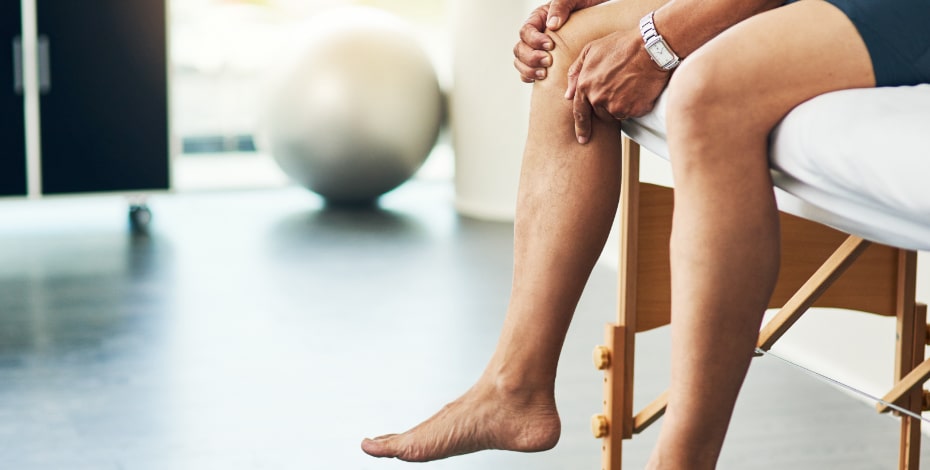
Grants assist with physio research projects

Since 2012, the Pat Cosh Trust has issued funding to 21 research and project grants in Victoria, totalling approximately $400,000. A discussion with the three 2021 recipients about their work.
Building toolkits for telehealth
The ongoing COVID-19 pandemic has given telehealth a big boost, but some clinicians lack confidence in using it.
Associate Professor Christian Barton received a Pat Cosh Trust Grant this year to develop a toolkit for clinicians treating osteoarthritis.
As a musculoskeletal and sports physiotherapist, Christian Barton has a focus on lower limb injuries, in particular osteoarthritis and persistent knee pain.
As a researcher at La Trobe University’s Sport and Exercise Medicine Research Centre, Christian is interested in translating effective physiotherapy practice for use by clinicians.
Christian’s approach is to develop toolkits providing resources for physiotherapists to use with their clients.
Past projects include developing a physiotherapy exercise platform (for which he previously received support from the Pat Cosh Trust) and, in collaboration with Dr Amy Dennett, a cancer exercise platform.
His current project, supported by the Pat Cosh Trust, is to develop and evaluate an online toolkit to support physiotherapists to competently and safely implement telehealth delivery of education and exercise therapy for osteoarthritis and other musculoskeletal pain conditions.
The project builds on an education and exercise program called Good Life with osteoArthritis: Denmark (GLA:D), originally developed in Denmark for patients with hip and knee osteoarthritis.
Christian and his colleagues at La Trobe University’s Sport and Exercise Medicine Research Centre have successfully implemented the GLA:D program across more than 450 clinics and 1800 physiotherapists in Australia, but it is primarily designed for face-to-face delivery, not telehealth.
‘We have seen a big uptake of telehealth through the COVID pandemic,’ he says, noting that with the continued lockdowns seen this year, providing physiotherapy services via telehealth has continued to be important.
‘But when we talked to physios, we really picked up on the fact that many were not confident in using telehealth.
'They felt they could not offer as good a service via telehealth compared to face to face.
'We want to support them in every way possible and we think this toolkit will help them provide telehealth services for osteoarthritis and other musculoskeletal pain conditions competently and safely.’
Working with a group of researchers from La Trobe University, Monash University, the University of Queensland and Curtin University, Christian and his team have started laying the groundwork for the toolkit.
A series of surveys and interviews they conducted with physiotherapists have provided data on their perceived competence and capacity to deliver telehealth for knee osteoarthritis, as well as the barriers and potential improvements.

Christian Barton is developing a toolkit to assist physiotherapists with treating osteoarthritis via telehealth.
Now the initial interviews have been completed, the researchers are working on the design of the toolkit itself, developing and collating an array of evidence-based multimedia resources including video, infographics, discussion forums, webinars, podcasts, quizzes and case-based learning activities.
Part of the grant funding is being used to develop some of these resources, such as videos and infographics, and to set up the website.
The resources might include, for example, guides to assessing knee pain via an online consultation and the delivery of an individual rehabilitation program for the patient based on the results of the assessment.
A video might teach a patient some manual therapy skills they can use on themselves.
The toolkit may also provide information on setting up a clinic to deliver telehealth and on how to support patients to implement telehealth in both work and home settings, says Christian.
To help develop the toolkit, Christian and his team will run a series of workshops and focus groups with both physiotherapists and patients to identify what works and what doesn’t, what aspects of the toolkit each stakeholder group likes and dislikes and so on.
This co-design process is likely to go through at least two rounds of workshopping, interviews and focus groups before the final toolkit design is complete, he says.
The final toolkit will be freely available to all physiotherapists and Christian believes it will have wide applicability for physiotherapists wanting to offer telehealth services to patients in rural and remote locations, as well as those whose home or work life makes it difficult to schedule face-to-face physiotherapy appointments.
‘We think that by using this toolkit, physios will be able to offer their services to many more people who wouldn’t normally be able to get to the clinic to see them,’ Christian says.
The impact of testing speed on spasticity outcomes
Dr Megan Banky’s interest in the influence of spasticity on mobility outcomes after neurological injuries stems from her clinical work in this field.
Now she is following up her PhD with more research, thanks to a Pat Cosh Trust Grant.
As a physiotherapist for Epworth HealthCare in Melbourne, Megan Banky has been combining clinical physiotherapy with research for several years.
Focusing on spasticity resulting from neurological injuries, such as stroke, cerebral palsy, traumatic brain injury and multiple sclerosis, she has been investigating its impact on walking outcomes.
In patients with neurological injuries, spasticity can have a profound impact on an individual’s independence, quality of life and rehabilitation length of stay.
However, there is mixed evidence regarding its impact on walking outcomes.
Clinicians commonly use the Modified Tardieu Scale (MTS) to assess for lower limb spasticity.
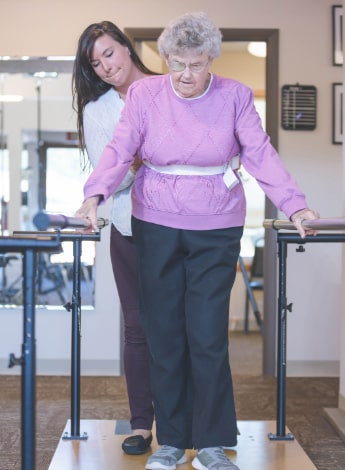
Assessment in a clinical setting for lower limb spasticity is compared to the way the leg moves during walking.
This involves the clinician moving the lower limb, straightening the knee or dorsiflexing the ankle, slowly to measure normal range of motion and then quickly to assess for the abnormal, speed-related, spastic response.
Megan’s PhD research, completed in 2020, looked at the disparity between the way spasticity was assessed in a clinical setting and how the leg moves during walking.
‘What we found was that during the testing using the Modified Tardieu Scale, clinicians were moving the limb a lot faster than how it moved during walking—there was a real mismatch or disparity between how the leg moved during walking and how clinicians were completing their bed-based assessment, potentially leading to false positive assessment findings,’ she says.
Megan’s current project, supported by a Pat Cosh Trust Grant, is looking at the effect of controlling the speed of assessment when using the MTS.
First the test is done as per the standardised testing instructions, slowly and then as quickly as possible.
Then it is repeated at the exact speed that the individual participant’s joint moves during walking to see if this produces a different response, and whether the relationship between spasticity and walking performance in this population can be better understood.
To assist with data collection, the research team has developed (in partnership with researchers at Swinburne University and the University of the Sunshine Coast) an innovative, affordable and user-friendly sensor-based system.
Two small, portable sensors are placed on the leg during a 10-metre walk test to measure the exact speed of knee and ankle joint movement (angular velocity).
The sensors are then placed on the limb during the MTS, providing immediate feedback regarding the testing speed and joint angles.
This system enables the researchers to complete a spasticity assessment matched to the individual’s exact joint angular velocity, during walking.
While recruitment through both inpatient and outpatient clinics has been slowed by Melbourne’s frequent lockdowns, the research team is on track and expects to finish all of the recruitment and testing by the end of the year.
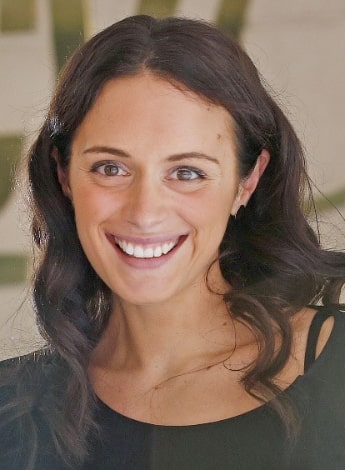
Megan Banky's research looks at the impact of spasticity on walking outcomes.
Megan hopes the results will provide greater understanding of which individuals have spasticity that truly impacts walking, warranting active intervention.
If this study demonstrates that a controlled testing velocity does impact spasticity assessment outcomes, the research team would like to develop a smartphone app or small device for testing an individual’s speed of leg movement (angular velocity) during walking and providing real-time feedback when matching the MTS to this speed.
Ultimately this may assist in making the MTS a more functionally relevant assessment tool.
‘We know the Modified Tardieu Scale is effective at measuring spasticity at an impairment-based level.
'We’re just trying to adjust and streamline the way we use it,’ Megan says.
‘I am hoping we can have a more accurate clinical assessment that we can individualise to our patients, instead of using a generic assessment tool for everyone.
'Using the regular assessment tool, we might have five patients test positive for spasticity.
'By matching the speed of assessment to the speed of their limb movement during walking, we may only have three patients presenting with spasticity.
'Those three may be the ones who will truly benefit from active interventions, whereas with the other two, we can have the confidence to say “You have spasticity but it’s not impacting your walking, therefore we don’t need to treat it”.’
The bottom line is that, as a clinician, Megan would like to feel confident that she is only treating the patients whose spasticity impacts their functional performance, rather than utilising time, money and resources where they may not be of significant benefit.
‘Some people can function quite normally; they can walk; they can run with spasticity.
'For others, the spasticity leaves them unable to walk independently.
'So we are really trying to work out the link between spasticity and functional performance.’
Megan now finds herself as passionate about the research as she is about her clinical work.
‘It’s really rewarding to be able to contribute to the body of evidence in the area and know that what we are doing research-wise is informing our clinical practice.’
Training clinicians to work with long COVID
Dr Karen Borschmann talks about her Pat Cosh Trust-funded project, which focuses on the physiotherapy management of long-term COVID-19 patients
As the Allied Health Research and Translation Leader at St Vincent’s Hospital in Melbourne, physiotherapist Karen Borschmann works across allied health to enhance patient care by increasing the amount of research and helping clinicians to better understand research so it can be used to improve clinical practice.
As with many researchers in the health space, Karen’s interests have taken a right turn during the COVID-19 pandemic, resulting in this project examining the long-term impact of COVID-19 on physical, emotional and cognitive function in patients and the resulting educational needs of physiotherapists and students working with these patients.
‘What we’re aiming to do is to really understand from an Australian perspective what the longer term outcomes related to COVID are—physical, emotional and cognitive—as well as social outcomes, giving us a clear picture of what we might expect for our patient populations who were our 2020 cohort, as well as future groups of COVID patients,’ she explains.
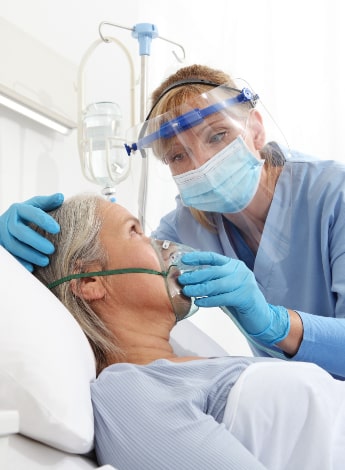
Physiotherapists and other clinicians will be treating COVID-19 patients in the long term as well as in acute settings.
‘We’ll then link it in to what physiotherapy clinicians and students need in terms of clinical education to help them to appropriately screen, assess and treat patients in subacute settings.’
The project, which is being conducted across St Vincent’s Hospital, the Alfred Hospital and Western Health in Melbourne, has two main parts.
The first looks at the experiences of patients diagnosed with COVID-19 in 2020, including their treatment pathways and recovery.
Included in the analysis will be aspects such as whether patients were treated at home or in hospital, rehabilitation pathways and socioeconomic impacts.
This will be followed by a survey investigating the physical, emotional and cognitive status of the populations at 12–18 months post diagnosis.
‘We’re hoping that by having the data from some of the major hospitals in Melbourne that were at the epicentre [of the outbreak in Australia] last year, we’ll be able to understand different experiences of COVID recovery, because the hospital systems each have slightly different approaches or different clinical pathways.’
‘Another big part is looking at the different pathways of treatment that people had after COVID to see if there are any differences in outcomes—is there anything we can say about the recovery of people who were treated in the community compared to those whose illnesses were managed within the health system and admitted to the hospital, for example?
The second half of the project focuses on the need for education and support for clinicians and students working with COVID-19 patients to help them understand the needs of the patients, not just during the acute stage of the illness, but also in the management of long-term problems and health issues resulting from the disease.
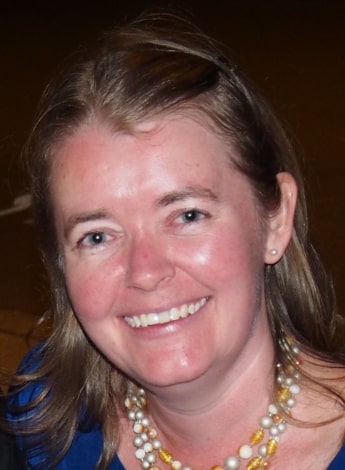
Karen Borschmann is investigating the long-term effects of COVID-19.
‘It’s about finding out what clinicians want and need and then looking at what type of education program they prefer—do clinicians want handouts, online training, seminars?’ Karen says.
Although this research is focused on physiotherapists, clinicians from other health services such as occupational therapy and psychology may also benefit from the education resources.
The goal is to develop an evidence-based clinical training package including screening tools, appropriate assessment tools and other resources for physiotherapists and others working within the hospital system.
The project grew out of Karen’s conversations with other allied health leads at hospitals across Victoria.
‘I’d been compiling as much information as I could about COVID from different disciplines to learn from and then sharing it broadly.
'Also, a number of clinician researchers were undertaking COVID-related research within their own health services.
'So a few of us got together to consider how we could all work together as a team and pool our resources to help to answer some of these questions,’ she says.
‘We had so many questions that were just too big for us to answer individually.
'So we applied for the Pat Cosh Trust funding to pull it together as a multisite project and to give us the opportunity to develop the education resources as well.’
Karen hopes that a comprehensive package of information will be developed to assist hospitals and allied health services in best practice for treating COVID-19 patients.
There is scope for it to be used to develop other evidence-based education programs too.
‘I think it’s going to have a lot of potential not just to help us think about COVID now and its longer-term management but also for pandemic planning for the future,’ she says.
Funding for Victorian physio research
These projects received funding from the Pat Cosh Trust.
The Pat Cosh Trust was established in 2010 with funds bequeathed by the former Physiotherapy Board of Victoria for the purpose of advancing education of all Victorian physiotherapists and students of physiotherapy.
The Trust was named for Pat Cosh in recognition of her outstanding leadership and vital contribution to the physiotherapy profession in Victoria.
She was the first physiotherapist elected chairman of the (then) Masseurs Registration Board in 1975 and she was instrumental in driving the change in name to the Physiotherapists Registration Board.
She was appointed as the first head of the physiotherapy course in 1960 and subsequently head of the School of Physiotherapy in Victoria at the Lincoln Institute in 1973, a position she held until she retired in 1986.
© Copyright 2024 by Australian Physiotherapy Association. All rights reserved.





